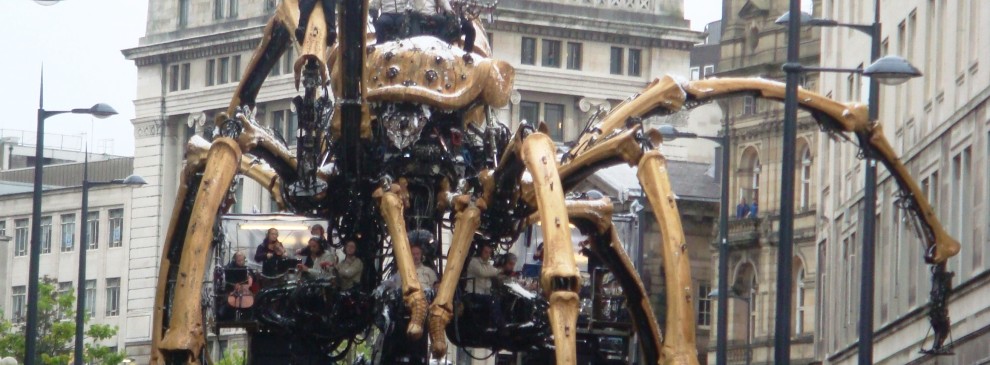A retrospective on the ICC as it turns five
Added on Monday, November 2nd, 2015
How do you measure the value of culture?
Millions of pounds are spent on ‘culture’ in the UK every year – billions across the world. Just about everyone agrees that culture brings a feel good factor to communities and you have only to look at the competitive bidding process to know that governments believe major cultural events such as the Olympics or Cities of Culture bring long term economic sustainability. But where is the evidence?
In 2010, I was part of the team that set up the Institute of Cultural Capital, to follow on from Liverpool’s enormously successful European Capital of Culture year in 2008. The city was buzzing, Liverpool was seen as trailblazing and you could feel the positive impact of the cultural activities everywhere – not just from regeneration but also in improved health and well-being and a more confident city.
While evaluation of cultural events was not new – with the Sydney Olympics perhaps being the first city to demonstrate economic impact – measuring wider impact was still in its infancy.
We wanted to prove that the £130m spent over six years in Liverpool – the highest of any European Capital of Culture to date at that time – had produced long term economic and social benefits. We also wanted to look at what worked and what didn’t, what could others learn from what Liverpool had achieved? What could Liverpool itself learn from the process?
That was the starting point for the Institute – not just to focus on Liverpool, though that was important, but to provide structures, processes and learning points that would help governments and cities across the world.
| ‘There was city-wide support to set up the Institute … getting funding, finding a venue, and agreeing how it would all work was inevitably harder!’ |
Setting up the Institute of Cultural Capital
There was city-wide support to set up the Institute – from Liverpool City Council to the Arts Council, both Liverpool John Moores University and University of Liverpool, to the key cultural leaders in the City. Getting funding, finding a venue, and agreeing how it would all work was inevitably harder!
We have to thank Phil Redmond, first chair of the Institute, for making a lot of this happen. Best known for creating three of Britain’s longest running drama programmes — Grange Hill, Brookside and Hollyoaks – Phil was a breath of fresh air, bringing everyone together and helping to fund it.
There was a feeling that we should reflect the wider impact of cultural events – not just the city centre ‘posh’ activities but the relevance to outlying areas. So to start with we were located in a science park, later moving into the Liverpool John Moores university building.
One of our first academics was Dr Beatriz Garcia as head of research, a highly acclaimed researcher in culture-led urban regeneration who had been involved in the Sydney and London Olympics and the Glasgow and Liverpool European Cities of Culture bids and activities.
We had started.
Research brief for the Institute of Cultural Capital
From the beginning we wanted to look at cultural impact in its widest sense, spanning pop to high culture (important in Liverpool where the Beatles have played such an important part in our heritage) and looking at how culture affects ordinary men and women. Taxi drivers expected big name conductors; what effect did pub singers in Liverpool Philharmonic Hall have?
And as mentioned earlier, this was not about just the city centre and economy. But could we measure the impact that a cultural event has on the health of citizens and more?
What lessons will help Hull UK City of Culture 2017?
I have been delighted to see the quality of research that has emerged from Institute of Capital Culture over the last four or more years and would urge others to use this wealth of analysis to shape their own cultural bids and events.
From my own perspective, what do I think are the key lessons that will help other cities?
- Make sure there is a legacy infrastructure. A lot can be learned from Lille, European City of Culture in 2004, in how it created flourishing activities around the periphery
- You have to use the vibrant city centre to create the ‘wow, we must go to Hull for a weekend’ and attract visitors initially
- You have to aim for parity across the city – council estates are as important as the city centre for creating well-being
- Get arts organisations together – ask them, what can you do for us? Make sure the money doesn’t always go to the biggest, best-known organisations
The future for the Institute of Cultural Capital
Congratulations to the Institute as it now approaches its fifth birthday. Thank you to all those who helped set up this valuable resource, not just for Liverpool but for governments and cities across the world. And here is to a continued long term and successful future to everyone at the Institute. The research on cultural impact has already created a legacy and resource, but also leading thinking on how to go about delivering and measuring impact of cultural events.










